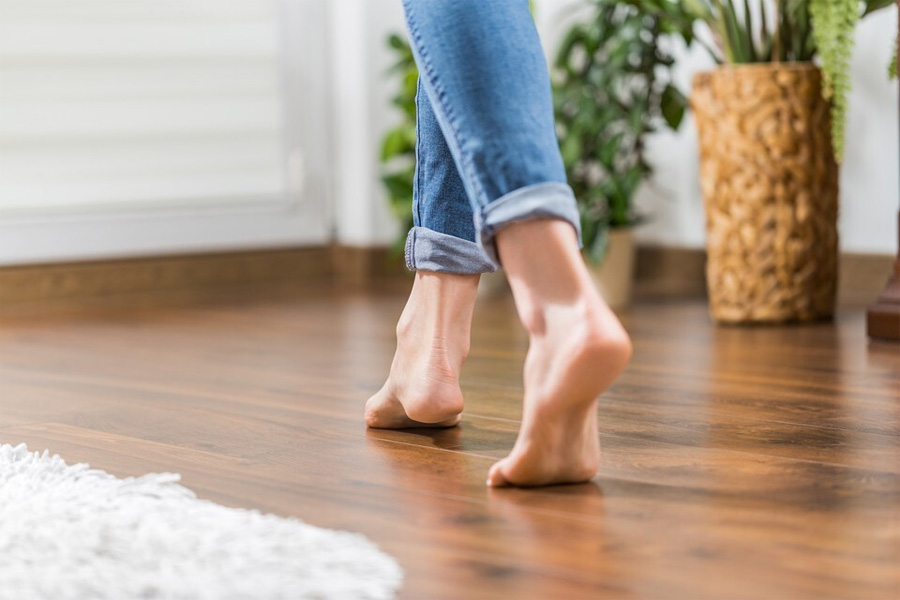There are numerous flooring types to choose from in today’s market. Of those available, laminate has become extremely popular due to its low cost, visual appeal, and easy maintenance.
But before you make the jump to use it on your next project, lets dive in to see how to choose the right laminate flooring. Join us as we find out the best ways to utilize laminate flooring in your space and how it can become the showstopper of your next project.
What Is Laminate Flooring
Invented in 1977, laminate floors are a type of hybrid floor that consists of four layers of material. These layer are sandwiched together and then fused using heat and glue.
These layers include: a melamine wear-layer, a high-resolution photo of the surface, a dense core board, and melamine backer.
Laminate has come a long way since the 1970’s and no longer has the plastic, hollow feel that set it apart from solid and engineered hardwood.
Modern laminate designs are realistic, hard-wearing and have a luxury look. Even the most seasoned designers have embraced modern laminate for use in homes and commercial spaces for a sleek, updated feel.
So if you are debating whether or not laminate flooring is the one for you, keep reading.
When You’re Seeking Something Durable
Due to a pre-treated and scratch resistant top layer, laminate flooring is strong and highly durable. Because of this property it is a great option for homes with kids and pets. With more resilience there is less worry about wear and tear. Modern laminate can also withstand spills and stains, which makes it a great option for kitchens and other heavy trafficked areas. This durability makes laminate highly versatile due to the fact that it works in many different rooms and areas in your home.
It Can Mimic Many Different Materials
Looking for wood or tile without the cost or maintenance? Laminate’s high-resolution photo surface can easily emulate wood, marble, and slate. The surface can also be created to look hand scraped or distressed, glossy or matte – with different textures and finished as well. There are also a variety of shapes laminate flooring can be cut to that will mimic wood planks or square tiles. To increase this effect, it can be laid down in patterns to achieve your desired flooring vision. Think parquet, herringbone or traditional horizontal or diagonal runs.
If You’re on a Budget
One of the main advantages to laminate flooring is that it is less expensive than most other flooring options on the market. With it realistic finishes and a variety of colors and looks, it is much more cost effective than buying real hardwood or tile.
When You Want Something That is Low Maintenance
There is no special cleaning routine or maintenance needed to keep your laminate floor looking it’s best. Dust and dirt can be easily removed with regular sweeping and vacuuming, while stubborn spots can be wicked away with a microfiber or cloth mop.
Most manufacturers recommend that you occasionally deep clean your laminate floors to remove tough dirt.
This easy lifestyle means less work for the homeowner and more years of enjoyment in the long run. Also, due to it’s durable nature, laminate will outlast many other flooring materials. It doesn’t require refinishing or sanding and with simple prevention, will look great for years to come.
You’re a DIY Homeowner
Most popular brands of laminate flooring are easy to install. Their glue less, click-together floating floor installation process can easily be handled by the do-it-yourself homeowner. Installation includes cutting pieces of wood in order to fit to size, which are then clicked together to form a pattern. With a little planning, most projects can be competed in a few hours and once installed the flooring is ready to be utilized. No need to wait for underlayment to dry or grout to set.
Overall, laminate flooring is a low-maintenance, versatile, hard-wearing floor. It’s a great option for the DIY homeowner that wants to stay under budget but still end up with an aesthetically appealing space and one they will enjoy for years to come.






